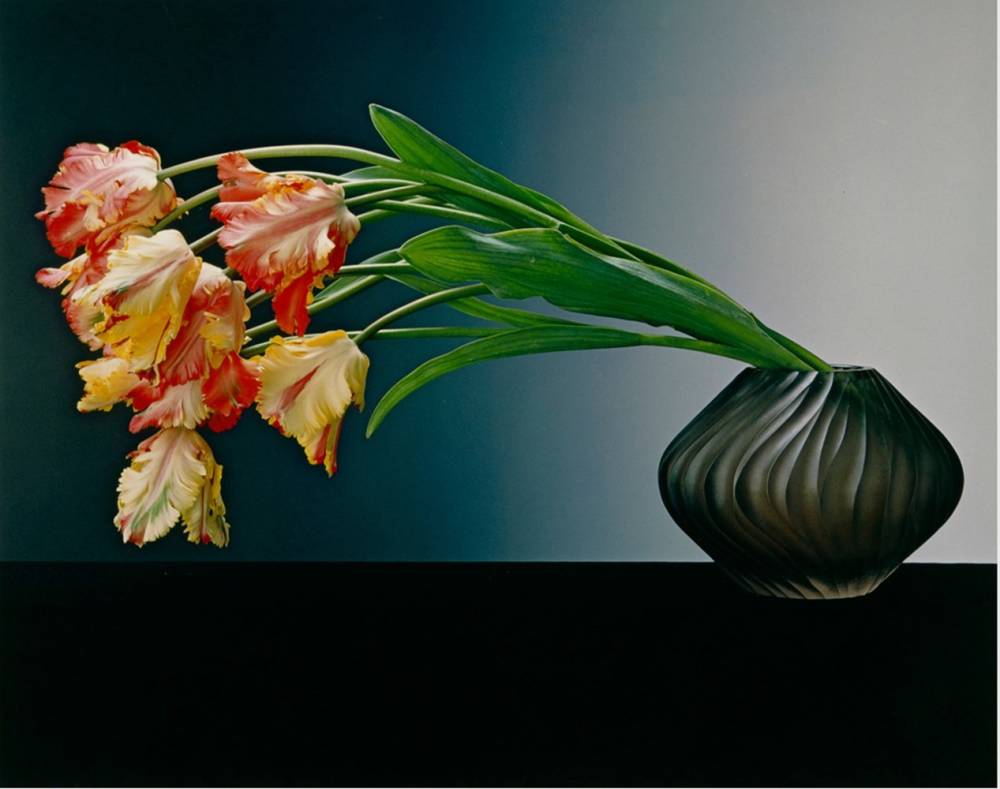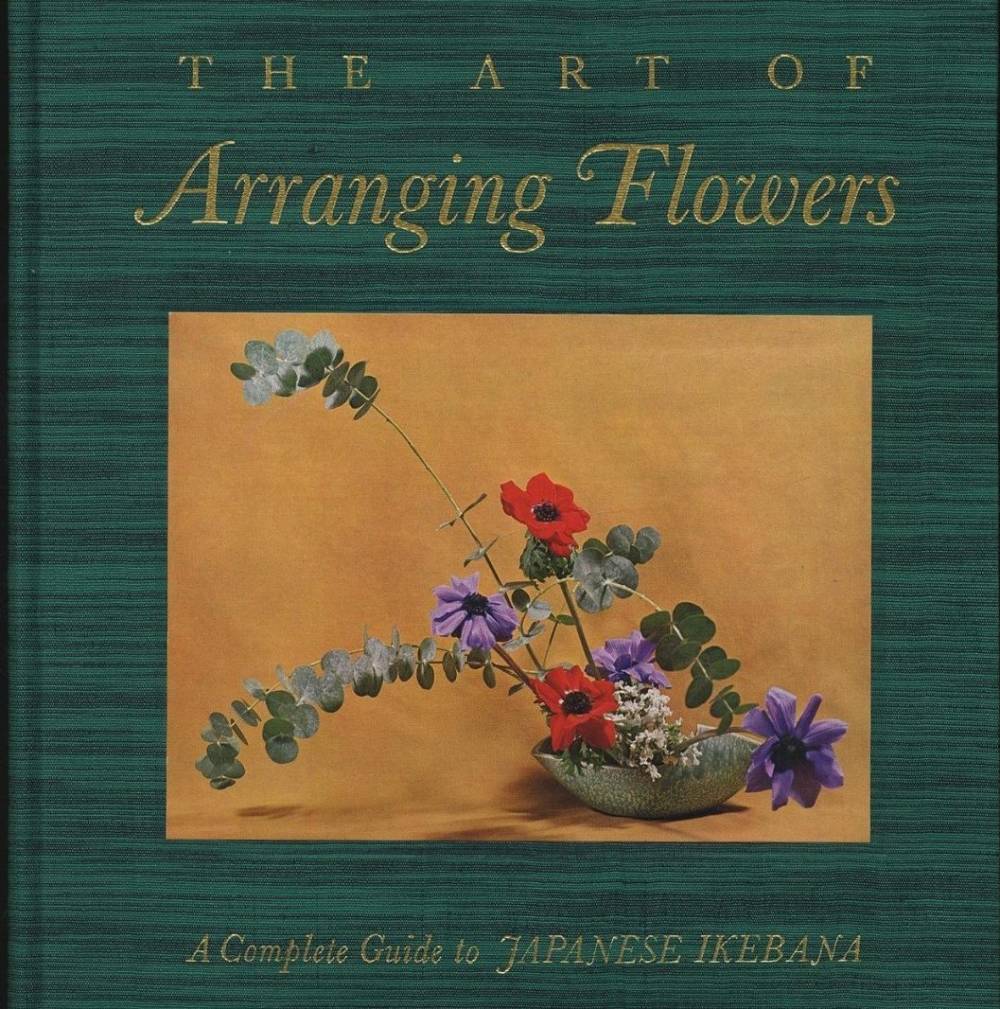
Shozo Sato
Art of Arranging Flowers, 1965
Instagram in the days of quarantine became a ‘how to’ universe of creative solutions for passing time while in isolation. If anything, it was remarkable to see the variety of new hobbies people explored as the world underwent a much-needed reset. From baking bread and tie-dying t-shirts, to painting, puzzling, ‘TikTok-ing,’ and dabbling as florists, any and all diversions were welcome. While many of said pastimes will undoubtedly fade post-Covid, others could continue indefinitely, sparking a lifelong passion or even leading to an entirely new career trajectory. If the latter path were to be true for those who took a liking to flower arranging, it won’t take long for them to discover the ancient Japanese tradition known as Ikebana.
Formally translated as “arranging flowers” or “making flowers alive,” Ikebana has been ingrained in Japanese culture since the artform first arrived from China, together with Buddhism, over 500 years ago. Often noted for its simple yet beautiful and engaging designs through which nature and humanity are brought together, many of the rules and philosophies associated with traditional Ikebana stem from Buddhist teachings, such as the desire to preserve and prolong life. While Ikebana took on a more secular approach to flower arranging following its expansion throughout Japan, the artform still maintains spiritual significance for those who practice it today.
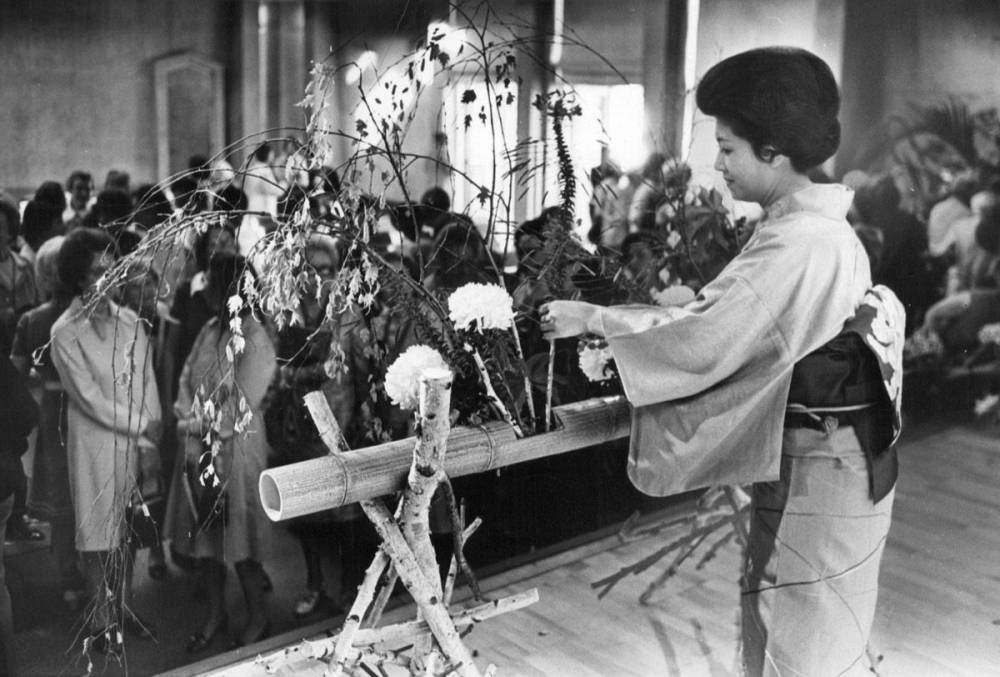
Kasumi Teshigahara
Ikebana International, 1975
Traditionally performed in silence, the act of making Ikebana is seen as a time to appreciate qualities in nature that people often overlook due to their busy lives. Furthermore, the meditative state in which these flowers are arranged frequently produce outcomes characterized by feelings of minimalism and restraint, with some complete works consisting of only a few blossoms interspersed among stalks and leaves.
ColIkenobō Senjō
Sōka Hyakki, 1820
Hirozumi Sumiyoshi
Rikka, 1700
Art and Flowers
1980
Japanese
Minimalist Ikebana Arrangement
Ikebana
Hanging Arrangement
Ikebana Arrangement
Ikebana Arrangement
Joni Duncan
Ikebana, Flower Arrangment
While the artistic intent behind Ikebana arrangements is oftentimes expressed through color combinations, organic shapes, graceful lines, and structural balance, the art form also relies on the language of flowers – a concept known as hanakotoba – to convey implied meaning. In this practice, plants are given codes and passwords, and arranged in a manner as to communicate directly to the recipient or viewer without the use of words. Based on this belief, the teachings of Ikebana indicate that there is no occasion which cannot be suggested by the manner in which flowers are arranged. As such, symbolic, underlying narratives are perhaps as important an element to the art of Ikebana as the flower arrangements themselves.
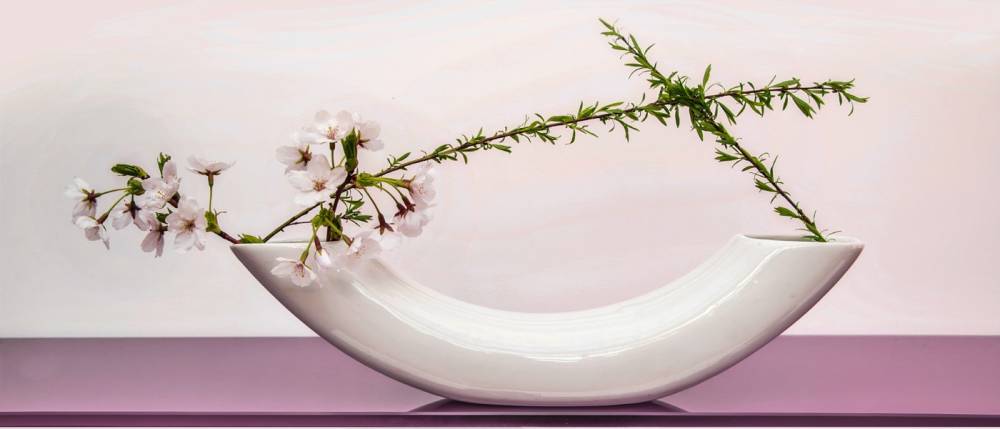
Ikebana Arrangement
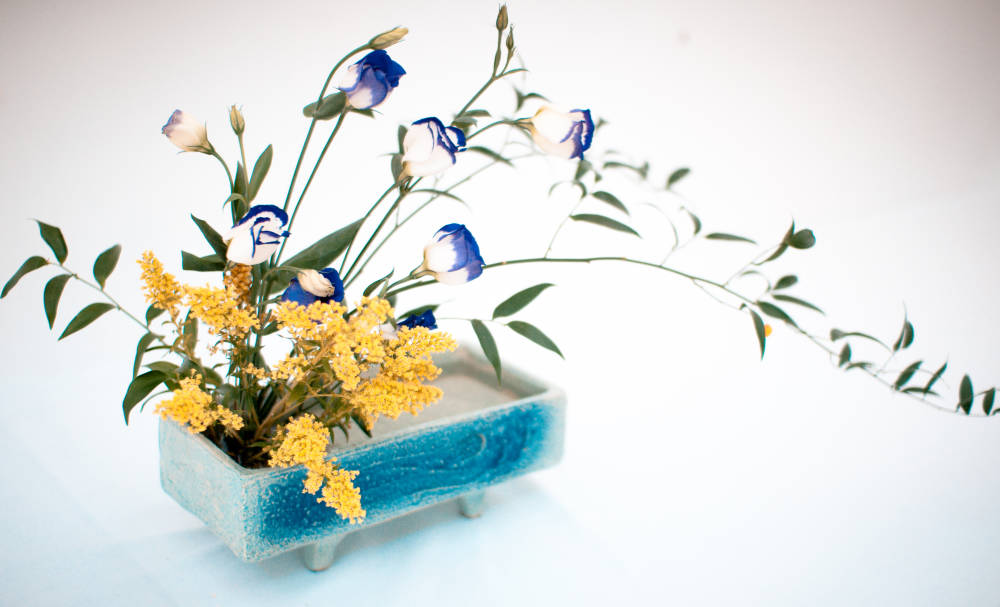
Ikebana
Flower Arrangement
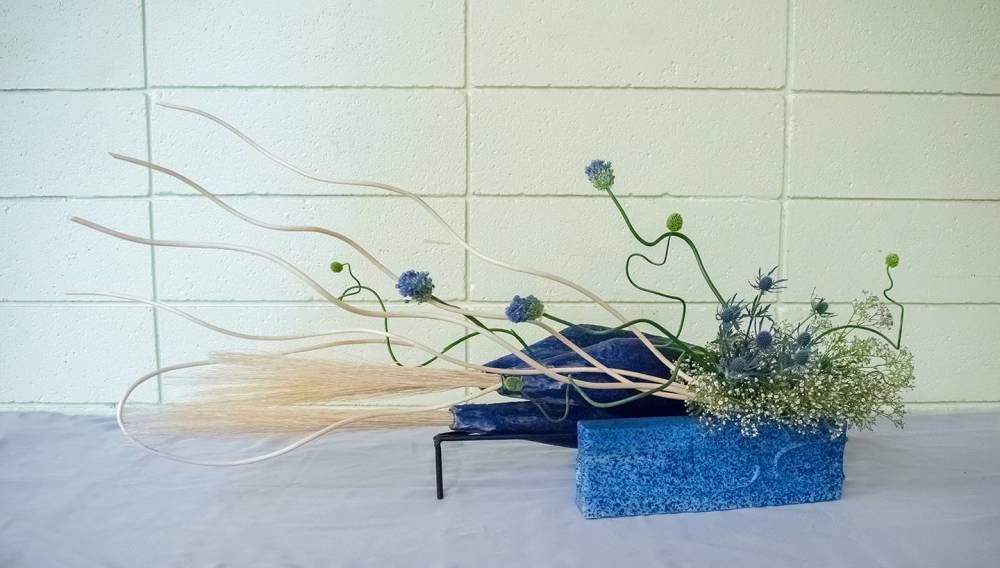
Ikebana
Flower Arrangement
Like much of Japanese culture, Ikebana relies on a metaphorical guidebook of symbols and hidden meanings to inform the centuries-old floral artform. The structure of most arrangements, for example, is based on a scalene triangle, often utilizing twigs to express three main points which symbolize either heaven, human, and earth, or sun, moon and earth. The idea of good and evil fortune also governs the selection of materials and the overall form of an arrangement; an odd number of flowers is considered lucky, while even numbers are seen as unlucky and are therefore never used. Colors, too, hold similar significance. Red flowers suggest flames and fire, and are only present at funerals, while white flowers are oftentimes used for housewarmings as they represent water and safety. Furthermore, the Japanese always express seasons in their arrangements, grouping flowers and foliage differently according to the time of year.
Ikebana
Flower Arrangment
Ikebana
Flower Arrangement
Ikebana
Flower Arrangement
Ikebana
Flower Arrangement
Ikebana
Flower Arrangement
The final element in the art of Ikebana is the vase in which the arrangement is presented, which the Japanese consider to be a key element of a work’s overall composition. Unlike Western flower arranging, Ikebana arrangements do not depend on the vase itself to hold the flowers in position, instead, receptacles are chosen based on a shape and style that will best prolong the life of the flowers.

Isamu Noguchi
Catalogue Raisonné, Ikebana in Table
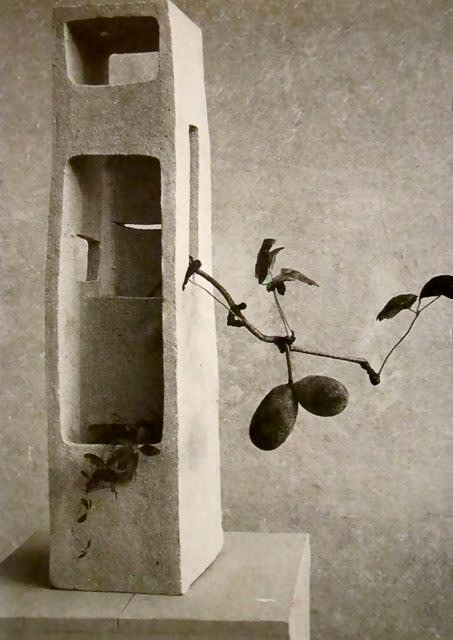
Isamu Noguchi
Lonely Tower Ikebana
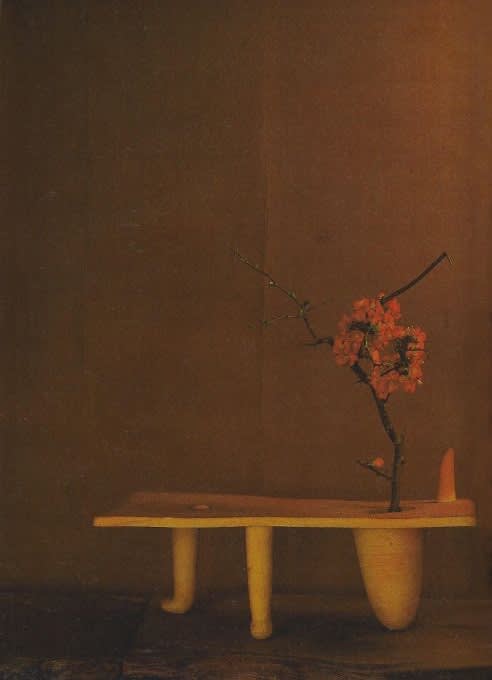
Isamu Noguchi
Ceramic Vase and Ikebana Arrangment
While the art of Ikebana has evolved stylistically over the past 500 years, contemporary masters still honor the centuries-old traditions dating back to the origin of the floral artform. With over 1,000 different types of Ikebana schools throughout the world today – and the rising popularity of flower arranging in the post-Covid era – it’s likely that the art of Ikebana is here to stay.

Ikebana
Flower Arrangement

Ikebana
Flower Arrangement
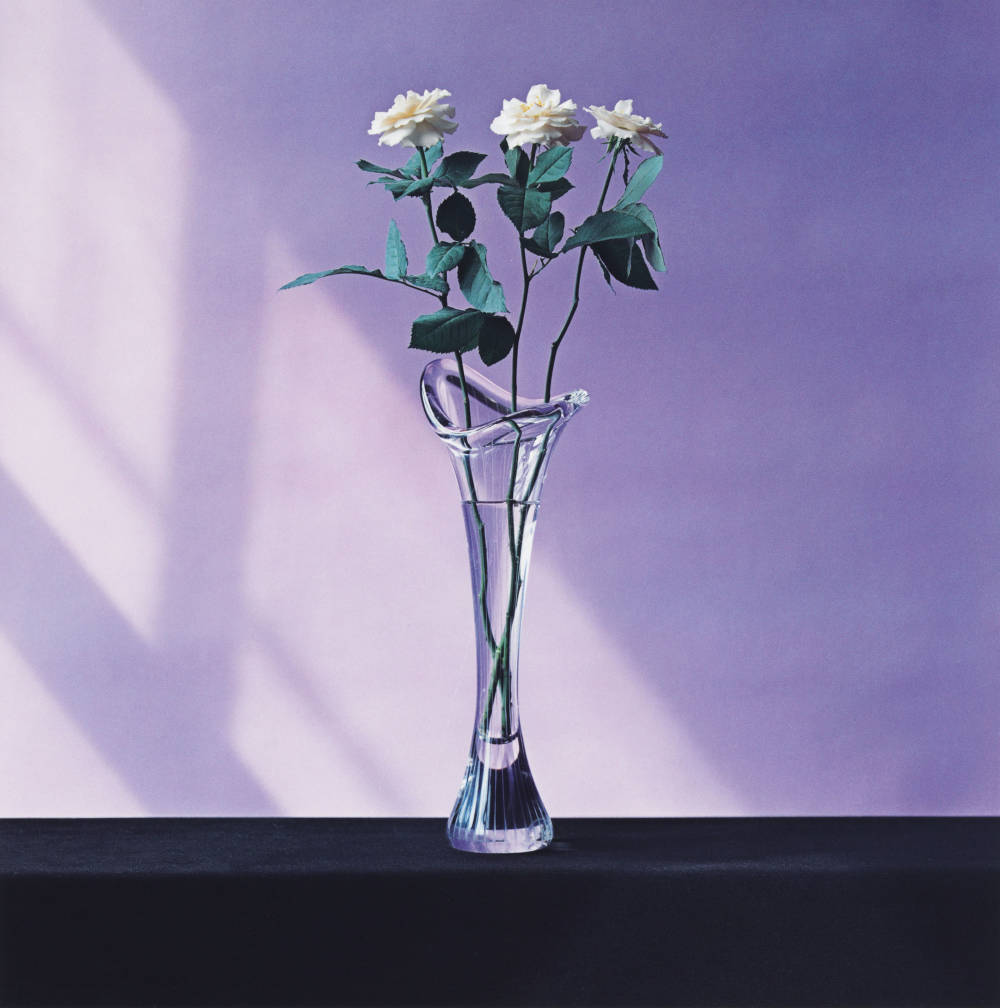
Robert Mapplethorpe
Roses (Inspired by Ikebana), 1982
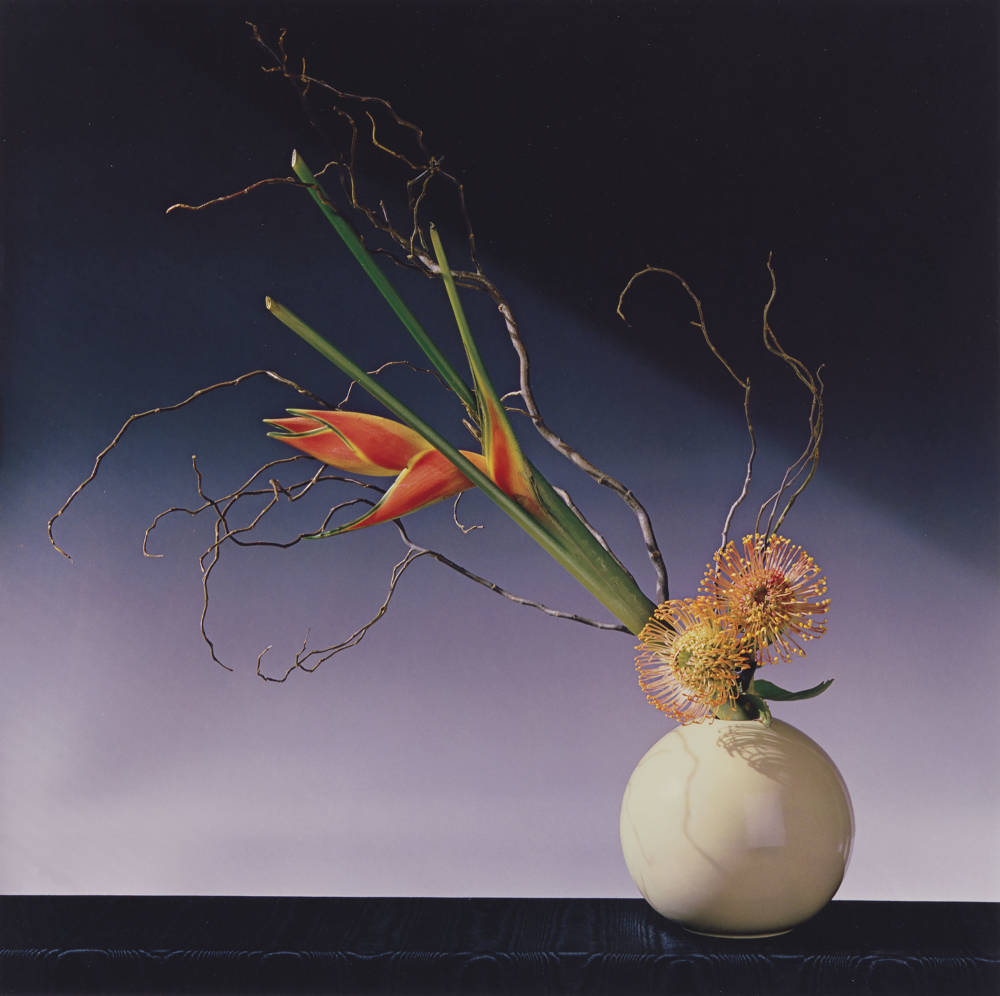
Robert Mapplethorpe
Flower Arrangement (Inspired by Ikebana), 1988
